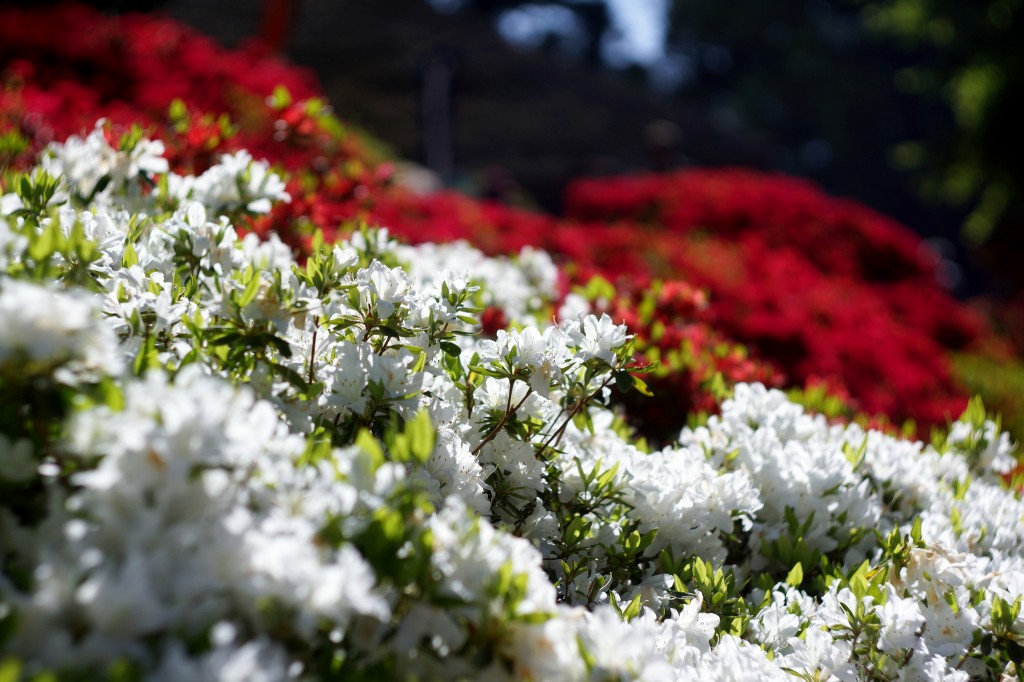Have you ever found yourself confused with how to fertilize your lawn and outdoor plants? If so, you should know that the process isn’t as hard as it seems. With some basic guidance and a little work, you can give your plants everything they need to thrive and grow beautifully. Use our total guide to fertilization in order to care for your lawn, trees, shrubs, annuals, and perennials.
Fertilization Basics
Equipment
There are several different apparatuses for spreading fertilizer. We won’t go into each type here, but we will offer you some crucial advice for proper spreader use. No matter what, be sure to read the instructions on your fertilizer and calibrate your spreader accordingly every time you do an application. All it takes is one instance of forgetting to calibrate the spreader to ruin a lawn or shrub by over fertilizing. Once it goes down, there’s no bringing it back up.
Where to buy
Don’t be deceived by the big name brands in shiny packages you’ll find at Lowes or Home Depot. The best fertilizers can be found in your local landscape supply store (almost every city has one). Nine times out of ten, you’ll find superior product at a highly discounted price by going this route.
Grass
Lawn fertilization can seem like an awfully complicated undertaking when you enter your local home improvement store and see the shelves lined with dozens of differently labeled bags of fertilizer along with several different apparatuses for spreading the stuff. Thankfully, it’s no where near as complex as it seems.
There are two main elements to consider in your lawn fertilization routine:
Fertilizer type – Although the major fertilizer brands would like you to believe that there are tons of different fertilizers with a bunch of different uses, you really only have a couple decisions to make when it comes to lawn fertilizer. The first thing you need to decide is whether or not you want an added herbicide. Choosing a fertilizer that includes a pre-emergent herbicide (prevents weeds from sprouting) can really give your lawn a foothold over crabgrass and other noxious growths, so it’s an addition worth considering.
The second thing you need to watch out for is the release time of your fertilizer. In practically all situations, a slow release formula is going to be best. Slow release fertilizers prevent unsustainable flash growth and they contribute to the long-term health of your lawn. The only time you could consider deviating from this principle is in the third and final lawn fertilizer application of the year. If you’re so inclined, a starter fertilizer can help carry over nutrients through the winter and give your lawn a boost come early spring. However, this is by no means mandatory, and it probably won’t produce results wildly different than those of plain old slow release fertilizer.

Timing – Your lawn should be fertilized three times per year: once in the spring (early March or late February), again in the summer (early to mid May), and lastly in the fall (early September). Unless you live in a climate where the winter months fail to halt lawn growth (Lucky you!), winterizer products are completely unnecessary. Timing is crucial when it comes to fertilization, so don’t deviate from the schedule!
Trees
The best fertilization regimen for trees is actually surprisingly simple: don’t do it. Trees are exceedingly strong and resourceful, and they simply don’t need a lot of supplemental fertilization. Think of it this way: thousands of species of trees have been overwhelmingly successful in the countless forests across the earth, and they’ve never needed fertilizer. As simplistic as that may seem, experience has proven it true. Don’t be lured in by fancy spikes or specialty tree fertilizers. At best, they’ll allow your trees to keep on doing what they’re doing; at worst, they’ll cause root burns, discoloration, and general sickliness. Dropping a little mulch around your trees will give them all the supplementary nutrients they need, assuming they need any at all.
Shrubs

When fertilizing shrubs, there’s really only one thing to consider. Is the shrub in question acid-loving or non-acid-loving? Once you determine the preference of the shrub, fertilization becomes quite simple:
Acid-loving plants will be happiest when you acidify their soil with a single spring application of bone meal, blood meal, or a prepared product like Hollytone. But don’t overdo it. One application in March or April is plenty.
Non-acid-loving plants will flourish most when fed sparingly with a weak (3-6-3 or less), traditionally blended fertilizer during the growing season. It’s important not to encourage a flush of new growth that the plant can’t keep up with, so apply fertilizer lightly and leave plenty of time between applications.
Perennials
If you’d like to give your yearly botanical visitors a helping hand with fertilization, there are two ways to go about it. First, you should do one light application of a weakly blended fertilizer (5-10-10 is a good one) in the spring. Perennials can also benefit from occasional liquid fertilizer as the weather gets warmer and the growing season kicks into full gear. Scheduled liquid applications can promote lush foliage, big blooms, and healthy new growth. Feel free to discontinue application as the growing season winds down.
Annuals

Although they only stick around for a single season, the fertilization protocol for annuals is quite similar to that used for perennials. Assuming you plant your annuals in the late spring or early summer, your best bet is to fertilize them with a weakly blended NPK/three-compound fertilizer soon after planting and then apply liquid fertilizer throughout the growing season. We wish you the best of luck in growing a gorgeous lawn and cultivating healthy plants. If you ever find that you still feel in the dark about how to fertilize your plants, your local landscape specialist will always be available to answer your questions and address your concerns. Happy gardening!
Photo Credits:
1.Photo by Jurek Durczak
2.Photo by Tom Ray
3.Photo by Takashi M.
4.Photo by Swaminathan

